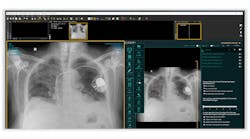A new study from the Massachusetts Institute of Technology (MIT) suggests that clinical decision support software designed to help doctors make better decisions could decrease certain diagnostic imaging tests, such as CT scans and MRIs, by about 6 percent.
The results of the study are published in the journal PLOS ONE, and researchers attest that it is the first large-scale study where physicians and other healthcare providers were randomized to receive clinical decision support (CDS) software to guide imaging decisions. The CDS provides information about whether a test they order for a given patient is appropriate based on guidelines from the American College of Radiology.
Beginning next year, the Centers for Medicare and Medicaid Services (CMS) have put in place new regulations that require imaging orders to be accompanied by a CDS recommendation in order to be reimbursed by Medicare.
Joseph Doyle, the Erwin H. Schell Professor of Management and Applied Economics at the MIT Sloan School of Management, and one of the authors of the study, and his colleagues, conducted a yearlong trial of CDS software at Aurora Health Care, the largest healthcare system in Wisconsin. The study involved more than 3,500 healthcare providers, half of whom were randomly assigned to receive the tool. The control group continued to order images as they had prior to when the trial began.
“Going in, we didn’t know whether doctors in the treatment group would be receptive to the technology,” said Doyle. “If the system recommended a different test from the one that was ordered, would the physician consider changing course? We also worried about the potential of alert fatigue, which happens when people are exposed to a large number of frequent alarms and consequently become desensitized to them.”
But the researchers found that CDS helped reduce targeted scans by about 6 percent relative to the control group. CT scans—the most common high-cost imaging type, which also carries the greatest concerns about over-ordering—were responsible for four-fifths of the overall reduction in targeted scans. While the software changed the nature of image orders, it did not change the number of images ordered overall. The effects persisted over time, suggesting that this type of alert can continue to affect ordering even with concerns about alert fatigue more generally, the researchers concluded.
“There is a lot of debate about the health risks and high costs that stem from the overuse of potentially inappropriate tests,” said Doyle. “Our research shows that technology can improve healthcare delivery by helping physicians make the right decisions about which diagnostic scans to use when.”

